“Working there [in the olive grove] is a ‘lesson in humility….’ How many generations have walked among those trees? And how many will walk there after me?’” —The Art of Eating, a quote by Jean-Benoit Hugues, producer of CastelineS extra virgin olive oil in Provence, France.
For many of us around the world, summer is nearly here, and what better time of year for “THE condiment” of summer: extra virgin olive oil! Commonly referred to as “evoo,” extra virgin olive oils, although all derived from the same delicious fruit, can vary greatly in flavor, color and texture depending on region and variety — making them unique and suitable for different uses, from a light finishing oil to a more robust oil.
In our collection, we have amazing high-quality extra virgin olive oils from Italy, Spain, Greece, France, Tunisia and South Africa, and our quest for superior olive oils around the globe forever continues! We are always searching for other regions with unique terroir — which translates to unique, specific flavor profiles, just like with wine — to add to our stellar line-up of extra virgin olive oils (oh, and one special, truly singular virgin olive oil…more later!)
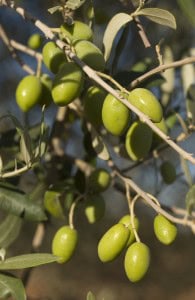 And it is true that oils in our collection span a wide range of color, texture, aroma and flavor. But there is a key element in common for all our oils: each producer presses and mills their olive oils on the land of their groves. This is a critical component, as the olives do not have to travel — so they are pressed fresh right off the trees, meaning they impart the best possible taste and health attributes. Each producer can control every aspect of olive oil production, from the tree to the bottle.
And it is true that oils in our collection span a wide range of color, texture, aroma and flavor. But there is a key element in common for all our oils: each producer presses and mills their olive oils on the land of their groves. This is a critical component, as the olives do not have to travel — so they are pressed fresh right off the trees, meaning they impart the best possible taste and health attributes. Each producer can control every aspect of olive oil production, from the tree to the bottle.
Before we get to that stellar line up and some tasty pairing and use suggestions, what does “extra virgin” mean? Firstly, it is unrefined (meaning it has not been altered by temperature or treated with chemicals) and the highest-quality olive oil you can buy. Extra-virgin olive oil is made from pure, cold-pressed olives, whereas regular olive oil typically is a blend, including both cold-pressed and processed oils. And evoo has specifications and standards it must meet to be a certified extra virgin olive oil (more on that!)
So how can you trust you are buying a true extra virgin olive oil? Can’t you just read the label? Well, unfortunately, no.
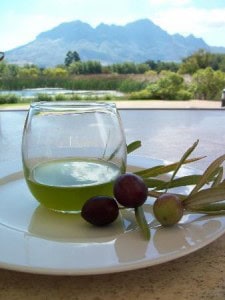 As a New York Times article stated, “The liquid that gets passed off as such [extra virgin olive oil] in supermarkets is often anything but. Shady dealers along the supply chain frequently adulterate olive oil with low-grade vegetable oils and add artificial coloring.” In fact, in the 1.5-billion-dollar olive oil industry, 70% of extra virgin olive sold is adulterated. And olive oil corruption is not just a modern problem.
As a New York Times article stated, “The liquid that gets passed off as such [extra virgin olive oil] in supermarkets is often anything but. Shady dealers along the supply chain frequently adulterate olive oil with low-grade vegetable oils and add artificial coloring.” In fact, in the 1.5-billion-dollar olive oil industry, 70% of extra virgin olive sold is adulterated. And olive oil corruption is not just a modern problem.
Fortunately, however, there are panels and organizations–like The International Olive Council (IOC)– dedicated to ensuring extra virgin olive oils meet certification and adhere to grading standards. IOC endorses over 50 certified sensory panels to ensure the quality of olive oils. Why tasting panels? Can’t extra virgin olive oils be tested in labs to ensure it is the real deal? It is true that extra virgin olive oil can be lab-tested for quality assurance, but you’d be mistaken to think this was a full-proof guarantee. Sometimes there is no replacement for the human senses.
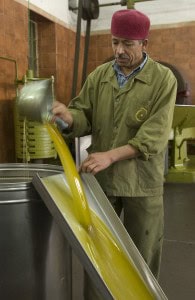 Ok, so what are those “strict taste and aroma requirements,” and what is the process for determining if any given olive oil fits those requirements? It is both a precise and poetic process. “The purpose of this international method is to establish the necessary criteria to assess the olfactory, gustatory, tactile and kinesthetic characteristics of extra virgin olive oil” (IOC). It’s important to note the purpose of tasting panels is to objectively test for defects and criteria for the characteristics stated above, not to offer subjective preferences for a style of extra virgin olive oil.
Ok, so what are those “strict taste and aroma requirements,” and what is the process for determining if any given olive oil fits those requirements? It is both a precise and poetic process. “The purpose of this international method is to establish the necessary criteria to assess the olfactory, gustatory, tactile and kinesthetic characteristics of extra virgin olive oil” (IOC). It’s important to note the purpose of tasting panels is to objectively test for defects and criteria for the characteristics stated above, not to offer subjective preferences for a style of extra virgin olive oil.
Here are some, but not all, of the defects tested for by a tasting panel: Fusty, frozen/wet wood, greasy, grubby, musty, dreggish, stale nuts.
“Fusty?” “Grubby?” Yes, this is official terminology. Show me a lab analysis with those results!
So as to not visually influence the tasters during a panel, the oil samples are poured into blue-tinted glasses. Once again, this is an exact yet lyrical procedure. The IOC requires “standardized glasses containing the samples, code numbered, covered with a watch-glass and kept at 28 degrees Celsius + 2 degrees Celsius…a tray with slices of apple…Glass of water at ambient temperature.”
That’s the exact part.
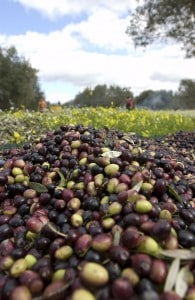 The more lyrical, sensual part (but also exact) looks like this: “cup the glass in one hand hand and cover it with the other to trap the aromas…swirl it, warm it…stick your nose into the glass and take a good whiff…Now take a sip of the oil…suck air through the oil to coax more aromas out of it, and then…close your mouth and breathe out through your nose. This “retro nasal” perception will give you a whole bunch of other flavor notes” (Olive Oil Times).
The more lyrical, sensual part (but also exact) looks like this: “cup the glass in one hand hand and cover it with the other to trap the aromas…swirl it, warm it…stick your nose into the glass and take a good whiff…Now take a sip of the oil…suck air through the oil to coax more aromas out of it, and then…close your mouth and breathe out through your nose. This “retro nasal” perception will give you a whole bunch of other flavor notes” (Olive Oil Times).
Does this sound like a lot of hoops to jump through to ensure the quality of a true extra virgin olive oil? Well, it is.
As Majid Mahjoub of olive oil producer Les Moulins Mahjoub says so eloquently, “…If you know [the] efforts [that] must be made to achieve an authentic first cold press [olive oil] in its supreme mystery, [then you can] rejoice the soul of the old master.”
Chloe Dimitriadis, owner of our Greek olive oil producer Biolea, eloquently explains what goes into their olive oil: “Family, heritage, sustainability, innovation, accountability, quality: these are the values we take pride in knowing are the foundation of our company…In these difficult times, we have learned to appreciate more what we have and how important the simple and most things in life are. As a typical Cretan family, we feel blessed to gather around the table and dip some freshly baked bread into what ancient Greeks called liquid gold.”
We agree, Chloe and Majid — knowing that so much goes into these family-produced olive oils, let’s appreciate the simple things and enjoy the supreme mystery! That’s why we feel it is so important to make a connection with our olive oil producers — to not only vet the quality, but to form relationships with amazing human beings. We visit our producers, hear their stories and history, see their land, and have dinner at their table. Now more than ever, people want to trust the food they are putting on their own table.
We trust and stand by the quality and integrity of all the extra virgin olive oils in our catalog (and that one special virgin olive oil with an intentional “defect” that makes for one unique oil!)
Yes, let’s talk about the ten outstanding extra virgin olive oils in our collection. Although these oils all have distinguishing characteristics based on the varieties and the terroir of their specific region, all of these producers have their own mill, allowing the olives to be pressed immediately after picking with no time to degrade or ferment. So, without further ado!
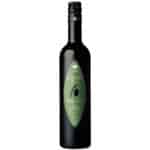
From Provence, France: CastelineS Extra Virgin Olive Oil AOP
● Made with early-harvested and cold-pressed olive varietals Salonenque, Aglandau, Grossane and Verdale to reflect the true Provencal terroir.
● Aromas of cut grass, flavors of artichoke and almonds and a touch of pepperiness.
● Perfect complement to seafood, poultry or vegetables.
● For me personally, here in my coastal little city of Portland, Maine, USA, I’ll be grilling up some Atlantic scallops and tender asparagus.
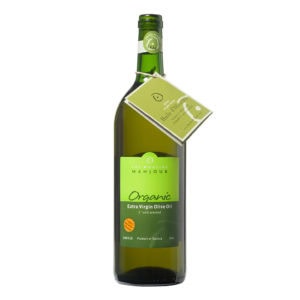 In the fertile Mejerda Valley in Tunisia: a Southern Mediterranean organic olive oil from Les Moulins Mahjoub
In the fertile Mejerda Valley in Tunisia: a Southern Mediterranean organic olive oil from Les Moulins Mahjoub
● Made with sun soaked Chetoui olives, processed in an ancient stone mill.
● Layered in a vertical press between round natural fiber mats called scourtins.
● Decanted by hand, or à la feuille, rather than by suction or draining
● The unfiltered oil is the pleasing color of green apples with aromas of freshly picked vegetables, soft and clean on the palate.
● Great for cooking or finishing, I use this liberally on fresh garden greens, pasta and roasted or grilled sea bass.
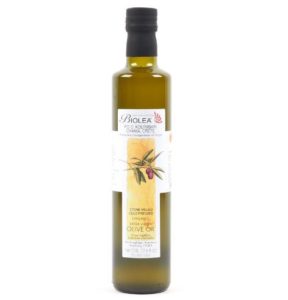 From Crete, Greece: Biolea Organic.
From Crete, Greece: Biolea Organic.
● Made with Koroneiki olives, stone-milled, cold pressed and unfiltered creating an oil lighter than its Greek cousins.
● Buttery with a hint of sweetness and a touch of herbal pepperiness at the end.
● My mother just dropped off some tender greens from the farmer’s market in her town; I think Biolea Organic would be perfect!
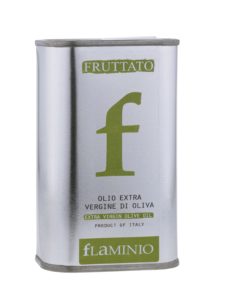 From Umbria, Italy: Flaminio Fruttato
From Umbria, Italy: Flaminio Fruttato
● Harvested from olives in the first stages of ripening
● full-bodied and decisively aromatic oil with a pleasant spice and pleasing, slight bitter aftertaste.
● Medium bodied, pairs well with strong flavors
● I’m thinking of buying some Pio Tosini Prosciutto di Parma from my local meat and cheese shop and pairing with fresh seasonal Maine strawberries…
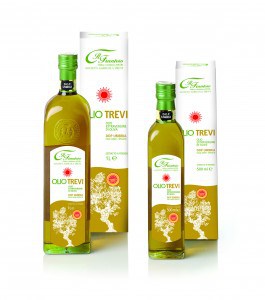 From Umbria, Italy: Trevi DOP
From Umbria, Italy: Trevi DOP
● From the same family producer who makes the Fruttato
● Certified DOP which means they use specific olive varietals, grown in a region, with specifications on harvesting technique, and yields.
● This filtered oil has a fresh, fruity aroma and a flavor both sweet and peppery.
● I think of all the cooler summer nights we have here in my little seaside city and how perfect Trevi would be over one of my grandmother’s favorite dishes, lentil-vegetable soup with olive oil brushed and grilled sourdough bread.
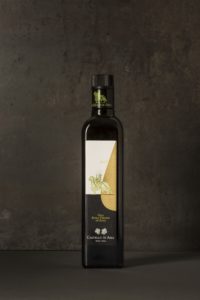 From Tuscany, Italy: Castello di Ama extra virgin olive oil
From Tuscany, Italy: Castello di Ama extra virgin olive oil
● Olives are handpicked, cold pressed, and delicately filtered through cotton wool. They grow, harvest, and produce their oil with care and precision.
● Fruity aroma and a strong earthy, herbal flavor up front with a lively, peppery finish.
● I eagerly await zucchini and summer squash season when my neighbor drops off bags on my porch!
And Spain, of course! Rogers Collection has olive oils from three Spanish regions:
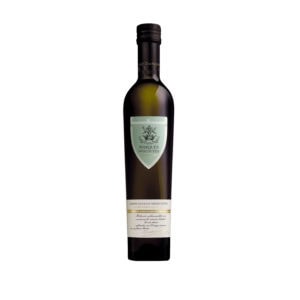 From Extremadura, a region renowned for its rare Morisca olive, Marques de Valdueza and their Merula brand
From Extremadura, a region renowned for its rare Morisca olive, Marques de Valdueza and their Merula brand
● This variety has a low fruit yield, but it possesses immense flavor characteristics: distinctly fresh and fruity, with hints of almond, pepper and a memorable sunny fragrance. This is a great finishing oil.
● Merula is made from second-harvest olives; the added time on the trees gives this oil its characteristic flavor of cut grass, green almond and dried fruit, with a pleasant, buttery mouthfeel. The second-harvest olives also give higher smoke point, so this makes a great cooking oil as well as a finishing oil.
● I can’t wait to try a homemade gazpacho finished with Marques de Valdueza….maybe paired with local fish seared in Merula!
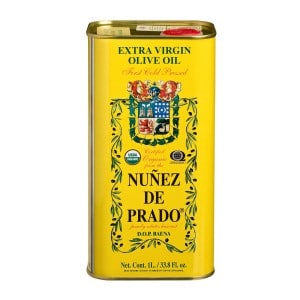 From Andalusia: Organic Nunez de Prado and their cream of the crop gravity-pressed Flor de Aceite
From Andalusia: Organic Nunez de Prado and their cream of the crop gravity-pressed Flor de Aceite
● Nunez de Prado has been stone-grinding olives in the sun-kissed hills of Baena, Spain for seven generations.
● Holds tantalizing flavors of green olives, oranges and lemons, fresh cut grass, almonds and apples with an accentuated smooth, sweet finish.
● I have been known to drizzle, dip, smear, douse, grill and baste with this delicious olive oil. Let’s just say, I’m really looking forward to vine-ripened tomato season…
 From Costa del Sol: Organic Belvis de las Navas
From Costa del Sol: Organic Belvis de las Navas
● This organic mountain extra virgin olive oil made with a blend of heirloom varieties specific to their estate grown in a microclimate nestled among the steep slopes and narrow terraces.
● The climate and terrain gives the olives and their oil the delightful aromas of freshly cut grass, ripe tomatoes, artichoke and a hint of almond and a spice on the finish as well the intermediate intensity of spice and bitter which denotes a balanced and stable oil.
● Although this oil would be good in just about any capacity, all I can think about is doing a liberal dip of crusty bread into this aromatic oil!
And let’s turn the world upside down for a moment, literally, and travel to the Southern Hemisphere. Although the origin of olive cultivation traces back to the eastern Mediterranean coast as early as 3000 BC (and quickly spread through parts of Europe, northern Africa and the Iberian Peninsula), several countries from the Southern Hemisphere have started olive cultivation and olive oil production in the last few decades.
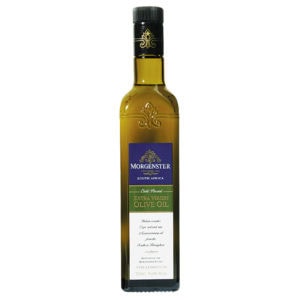 So, from Stellenbosch, South Africa, we introduce Morgenster
So, from Stellenbosch, South Africa, we introduce Morgenster
● Made with a blend of fourteen olive varieties originally of Italian origin.
● The varietals thrive in the estate’s rocky soil which allows excess water to quickly drain, meaning no excess water in the olive fruit resulting in higher antioxidants.
● A steady, cool sea breeze slows the ripening process of the olives, allowing the olives more time to develop.
● If artichokes are in season in your corner of the world, try goat cheese stuffed artichokes with Morgenster oil-balsamic vinaigrette for dipping!
And a special note about our one virgin olive oil (not extra virgin). Although I have just spent several pages on the virtue of extra virgin olive oil, it is important to note that quality is not necessarily–or at least not solely–defined by “extra virgin” versus “virgin”; rather, the lack of defects in the oil. Here I pose a question: what if an olive oil producer acknowledged a particular “defect” and isolated that defect for its desired flavor, making it an intentional and pure flavor? Well, read on!
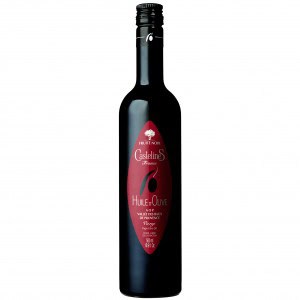 From Provence, from producer CastelineS we offer CastelineS Noir d’Olive Virgin Olive Oil
From Provence, from producer CastelineS we offer CastelineS Noir d’Olive Virgin Olive Oil
● Made in the age-old traditions of hand-picking the olives only when they are fully ripe and storing the fruit in containers without oxygen for three days to ignite the fermentation process, recreating the taste of preserved black olives.
● This process varies vastly from the rush to pick and crush olives quickly for extra virgin olive oil.
● The resulting flavor of CastelineS Noir d’Olive olive oil is a mild flavor with black olive tapenade and truffle notes and a sweet bouquet aroma.
● I imagine mashing garlic with this olive oil in a big wooden bowl for a perfect dressing, or drizzling over local Maine foraged mushrooms. And ok…twist my arm (but hold the twist!), I’ll try it: A martini finished with a few drops of CastelineS aromatic olive oil, so perfectly reminiscent of actual black olives.
For all the complexity that is growing, producing, bottling and distributing these outstanding olive oils, for all the tasting panels, standards and guidelines, there is also a simplicity to a good olive oil…more nature and art than analysis and procedure.
I’ll leave you with a timely quote from the short story “Before re-entering the uncertain framework of tomorrow” by Marcello Fois included in Castello di Ama’s book Growing and Guarding: “And making oil is nothing more than unveiling the olive. Just like how art unveils Nature. It unveils it and must recognize its superiority.”
Written by Leska Tomash